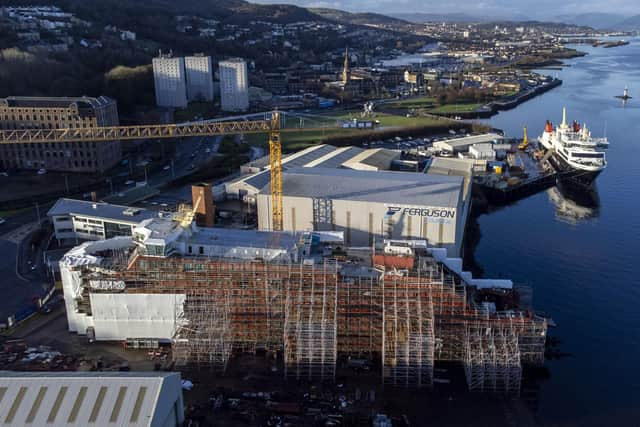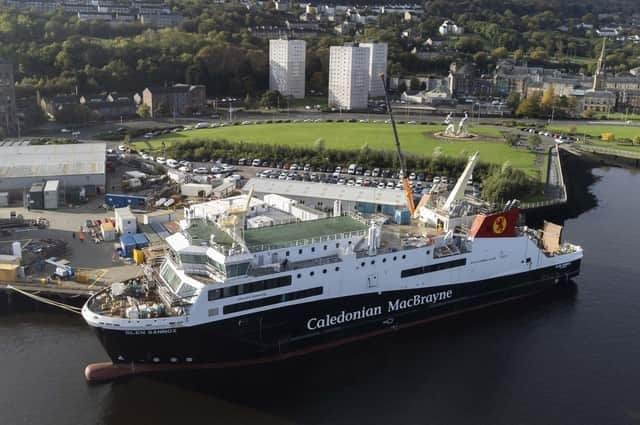Ferries fiasco: Turkish ferry-building progress throws Ferguson Marine nightmare into sharp focus – Alastair Dalton
It’s the story that’s kept me busy over the best part of a decade and yet it still rumbles on.
But the weirdest aspect to the Ferguson Marine fiasco is that building ferries for CalMac was never much of a story in the past because, in my recollection, there were no major problems.
Advertisement
Hide AdAdvertisement
Hide AdThat doesn’t lessen the significance of the mess we’re in over Glen Sannox and Glen Rosa, but it does provide important context for the news that two other ferries being built for CalMac in Turkey are making much better progress.


It was announced last week the first of this pair, Isle of Islay, is due to be launched on March 16, just four days after Glen Rosa, which was ordered six-and-a-half years before it.
However, the question should not be how are the Turks so good at building ferries, but why has Ferguson Marine been so bad at it. Or more specifically, what went wrong at the Port Glasgow yard, since it has built so many ferries for CalMac, big and small, over many decades.
They include many of the west coast operator’s larger vessels, such as the 40-year-old Isle of Arran as well as Isle of Mull, Lord of the Isles, Isle of Lewis and Hebrides, along with smaller ferries like the cutting-edge battery-diesel hybrids Catriona, Hallaig and Lochinvar.


The latter trio have proved so successful that Caledonian Maritime Assets Limited (Cmal), which orders and owns ferries for CalMac on behalf of the Scottish Government, has told me it would be confident to have the next generation of electric versions built by Ferguson Marine too.
All these past orders were, as I understand it, completed without any significant issues, just like those CalMac ferries built in England and abroad, such as Finlaggan in Poland, and its largest, Loch Seaforth, in Germany.
That also provides further context that building CalMac ferries overseas is now well established. When ordering those under construction in Turkey at the height of Ferguson Marine’s problems, ministers faced being damned wherever they placed the contracts – for turning their back on Scotland or risking another domestic debacle.
Intense scrutiny of what went wrong in Port Glasgow makes it pretty clear the responsibility lies with the yard’s previous managements combined with a lack of adequate oversight by Cmal and the Scottish Government.
Advertisement
Hide AdAdvertisement
Hide AdBut sorting out that almighty fankle is taking far longer than many expected. And the problem for Ferguson Marine, albeit now run by people that Cmal feels it can finally trust, is the more this drags on, the more confidence may ebb.
Yard chief executive David Tydeman told me in May last year he was confident Glen Sannox would be completed that autumn, but he has since informed MSPs of a series of problems that have set it back until at least March.
With sea trials and then CalMac’s own testing still ahead, it is still far from certain when the ferry will enter service. But what everyone connected with this sorry tale will hope is that it proves to be a one-off nightmare and does not set a new precedent.
Comments
Want to join the conversation? Please or to comment on this article.